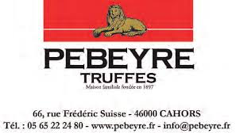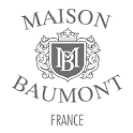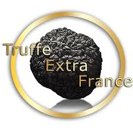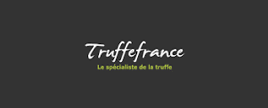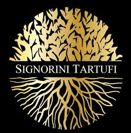Synthèse
The global truffle market, estimated at around $300 million in 2022, is expected to grow at a CAGR close to 9% over the next few years. Europe, particularly France, Spain, and Italy, dominates nearly 90% of the world's production. Despite production fluctuations due to climatic conditions, demand for truffles remains high, with France importing $73.56 million worth in 2022 mainly from Spain, the Netherlands, and Poland.
Production shifts due to global warming benefited regions like Sarthe in France with suitable limestone soils. Around 50 tons of preserved truffles are produced in France, amounting to €20 million in sales. Truffle harvesting remains artisanal, often involving trained dogs and pigs, and is key to the luxury nature of truffles, contributing to their high price volatility. Spain has emerged as a lead producer, but like France, it faces production drops due to climate change, affecting prices significantly. The market comprises mainly small producers and a few larger independent operators.
Regulations ensure the labeling of truffles, with a minimum of 1% truffle content required for products to use the term "truffle." However, concerns have been raised about actual truffle content in products, with some manufacturers found to include less than 1%. Overall, the truffle market reflects a balance of tradition, luxury demand, and modern challenges such as climate impact and the need for industry professionalism.
Truffle Demand Trends in France: A Gourmet Delicacy with Seasonal Peaks
In France, the truffle market epitomizes luxury with a product that is deeply rooted in culinary tradition. Despite the seeming rarity and high cost associated with truffles, demand for this delicacy has shown remarkable stability and an unwavering upwards trajectory. It is intriguing to observe how such demand persists despite production levels dropping significantly since the beginning of the 20th century—from over a thousand tons annually to less than fifty tons—principally due to socio-historical factors such as the World Wars and rural depopulation.
Contemporary France witnesses a demand that exceeds supply by a factor of ten, explaining why truffles maintain their luxurious status with prices soaring to the skies. Astonishingly, it's estimated that France consumes around eighty tons of truffles each year, a substantial portion of which needs to be imported to meet the insatiable demand that is hardly satiated by domestic production.
The allure of truffles peaks around the holiday season; during the festive periods of November and December, searches for truffles skyrocket, demonstrating the seasonality of consumer interest. This is also when prices tend to surge due to a conjunction of increased demand and the maturation cycle of the truffle itself.
Despite the fluctuations in production and environmental challenges such as drought, the French market for truffles has held strong, with estimated values of preserved truffles hitting around 20 million euros from production levels between thirty and forty tons. Even as the truffle market grapples with global warming, shifting the advantageous conditions for truffle farming to regions like Sarthe with its limestone-rich soil, the traditional truffle regions in the southeast of France continue to be the cornerstone of this luxury market.
In summary, the French truffle market presents a paradoxical image—an unyielding demand leading to a booming luxury market, juxtaposed with scarcity, precise seasonal cycles, and a dependence on climatic benevolence. This has resulted in prices that can range wildly from approximately 75 euros to thousands of euros per kilogram, reinforcing the product's elusive and opulent nature.
Key Players Shaping the Prestigious Truffle Market
The truffle market is a fascinating and luxurious niche with a host of devoted players who not only cultivate and harvest these esteemed fungi but also distribute, innovate, and enhance their prestige across both local and global landscapes. Truffle artisans, distributors, and specialized restaurateurs are all pivotal contributors to this esteemed industry.
Truffle Artisans and Producers
- Plantin, founded in 1930, is deeply rooted in the heart of Provence and has been supplying truffles and mushrooms to the best tables around the world for generations.
- La Maison Pebeyre, established in 1897 in South-West France, prides itself on excellence and tradition, offering a wide range of truffle products that speak to the subtlety and complexity of flavors this gourmet product embodies.
- Truffe Extra France is a smaller yet significant player that adds to the mosaic of the truffle supply chain. With a commitment to delivering fresh and flavorful truffles, this enterprise caters to those seeking the authentic taste of this rare product.
- Maison Baumont stands strong among its truffle-producing contemporaries, adding value to the industry through their artisan craftsmanship and dedication to quality.
Truffle Distributors
- Signorini Tartufi is a pivotal force, capturing the discerning tastes of truffle lovers and supplying these earthy treasures to a diverse clientele. As a testament to their impact on the industry, they maintain a notable presence in the market with a product range that is as varied as it is indulgent.
- Comtesse du Barry, originally known as a foie gras manufacturer, has expanded its gourmet offerings to include truffle products, showcasing its adaptability and responsiveness to the evolving tastes of luxury cuisine enthusiasts.
Specialized Restaurateurs
- La Maison de la Truffe has grown from a broker's office to an epicurean institution since 1932. Placing the truffle at the center of its culinary identity, this Paris-based company has become a landmark for those seeking to immerse themselves in the truffle experience.
- Artisan de la Truffe, a subsidiary of Arcady's under the larger Groupe Bertrand umbrella, presents a more modern take on truffle cuisine.
à la compréhension de ce marché
Détail du contenu
 Informations
Informations
- Nombre de pages : 30 pages
- Format : Version digitale et PDF
- Dernière mise à jour : 12/03/2024
 Sommaire et extraits
Sommaire et extraits
1 Market overview
1.1 Presentation and definition of the truffle market
According to AgriTruffe, a truffle is the name given to something created by an ascomycete ectomycorrhizal fungus with a globular shape . A single fungus can give rise to several truffles, and truffle harvests are largely dependent on weather conditions such as drought.
There are two main categories of truffle on the market:
- The black or Périgord truffle , which can be found in limestone soils under truffle trees 1 to 15cm deep.
- The white truffle, the most prized and expensive variety on the market, can be found mainly in Italy and Croatia.
The French market is facing thecontinuing internationalization of truffleproduction at a time when domestic production is becoming increasingly scarce. Production has been exported to the USA, Australia, Israel, Argentina... All these emerging markets benefit from the seasonal nature of European harvests. Their products are sold for export between two harvest periods in Europe.
The main production regions in France are the south-west, the centre-west and above all the south-east, which accounts for 70% of productionin 3 regions: Drôme, Vaucluse and Alpes de Haute-Provence.
In 2022, France imported the equivalent in value of US$73.56 million worth of truffles and mushrooms, mainly from Spain, the Netherlands and Poland (nearly 85% of total French imports).
The truffle market is made up of a multitude of small players who are breeders, harvesters and distributors of their products. Truffle sales in France are organized around a large number of markets located in different communes, with varying degrees of recognition for the quality of the products on offer. A number of players are mobilizing to continue modernizing the sector, and are seeking support from the public authorities.
1.2 A global market still dominated by Europe
Worldwide, the truffle market is estimated at around $*** million in ****, with $***.* million according to The Insights Partners, and $*** million according to Fact.MR. Over the next few years, the market is expected to grow at a CAGR close to *%: The Insight Partners estimates a CAGR of *% between **** and ****, and Fact.MR ...
1.3 The French market, an increasingly contested world leader
According to FranceAgriMer, ** tons of preserved truffles were produced in **** by some twenty truffle canners, representing total sales of ** million euros.
We now rely on Prodcom data supplied by Eurostat, using the code [***] which corresponds to the following description: "Dried mushrooms and truffles, whole, cut, sliced, broken or in powder, but ...
1.4 Foreign trade in truffles
Truffles and mushrooms
The data below are obtained from code [***], which includes mushrooms and truffles. It is therefore larger than our market, but gives an idea of trends in the truffle market.
The trade balance for truffles and mushrooms in France, from **** to ****, reveals a downward trend in imports, from **.** million ...
2 Demand analysis
2.1 A seasonal luxury product
This is a luxury micro-market in which margins are maintained by demand driven by top restaurateurs wishing to work with the product, or by wealthy French and foreigners associating this product with culinary luxury.
Demand for truffles is also subject to significant seasonal variations, with demand generally peaking during the festive ...
2.2 Stable demand
Demand for truffles has continued to rise since ****, according to France AgriMer.
Since the beginning of the **th century, a collapse in truffle production could have led to the disappearance of the industry. In fact, production has fallen from over *,*** tonnes a year to less than ** tonnes, mainly due to the ...
2.3 Consumer preference for Made In France and local products
Although they are up against Spanish truffles, which are heavily imported into France, French truffles have a strong national and international selling point: Made in France. Positioned in a luxury segment where quality and reputation tend to take precedence over all other characteristics, French truffles have the advantage of appearing as ...
3 Market structure
3.1 Many small producers and a few powerful independents
According to France AgriMer, ** to ** tonnes of truffles are produced annually in France. There are three main production regions in France:
Center and South-West: Nouvelle-Aquitaine, Centre Val-de-Loire South-East : Occitanie, PACA and Auvergne-Rhône-Alpes Centre-Est : Bourgogne Franche-Comté, Grand Est.
According to Planetoscope, the majority of production takes place in the South-East, particularly ...
3.2 A multitude of local markets alongside a few franchises and a nascent online business
According to the French Truffle Federationin ****:
**% of production is sold on wholesale markets **% on retail markets in nearly *** markets, **% to **% directly (***)
Truffles are marketed in France mainly by small local players present in the markets as follows Terre des Truffesmajor truffle towns: the Carpentras market, in the Périgord region, ...
3.3 Truffle harvesting
The high price of truffles is due not only to their rarity, but also to the way they are harvested: even today, truffles are harvested by hand, often with the help of truffle dogs and pigs, trained to find truffles buried underground.
Pigs have long been used because of their natural ...
4 Offer analysis
4.1 The main truffle categories
There are many types and species of truffles, the main ones are listed on the Artisan de la truffe Paris website:
4.2 Price volatility
The price of a truffle on the market depends on its size, quality and species. The price range can vary from €** to several thousand euros, making it a luxurious product.
Source: ****
fluctuate according to market rates, which are governed by supply and demand
harvests become rarer
For example, among fresh Alba ...
4.3 The success of Spanish truffles
Truffle cultivation in France is under increasing attack from stiff competition from Spain. For the past six years, that neighbor's production has outstripped that of France, which at best harvests only half of what it consumes, according to the Fédération Française des Truficulteurs. Spain's very recent truffle production ...
4.4 Towards French production of Italian white truffles?
While black truffles now account for **% of French production, an innovation has opened up the possibility of developing the Tuber magnatum Pico sector, also known as the Piedmont or Italian white truffle. In fact, a *-year collaboration between scientists at INRAE (***) and Robin Nurseries has resulted in the first plantations enabling ...
5 Regulations
5.1 A sector supervised and supported by the public authorities
In ****, a decree on the marketing and quality control of truffles was issued: since then, quality requirements linked to the fresh state of the truffles produced, as well as labeling for marketing, are the most important regulatory conditions concerning quality control. Labelling must indicate the name of the species, the country ...
5.2 Truffles fall victim to their own success: truffle products without truffles
French regulations stipulate that French products bearing the name "truffle" must contain more than *% truffle. What's more, the labels of truffle products must also indicate the type of truffle used (***) because prices vary according to the type of truffle used, consumers must have access to clear information.
Yet in December ****, the ...
6 Positioning the players
6.1 Segmentation
- La Maison Pebeyre
- Maison Baumont
- Truffe Extra France
- Artisan de la Truffe (Bertrand Groupe)
- Truffe France
- Plantin
- Signorini Tartufi
- Comtesse du Barry
- Domaine du Grand Merlhiot
- Ferme de Pourcier
 Liste des graphiques
Liste des graphiques
- Projections de taille du marché mondial de la truffe
- Estimation de la répartition de la production mondiale de truffe noire
- Répartition de la production mondiale de truffes
- Evolution des récoltes de truffes
- Valeur de la production de truffes et champignons secs
Toutes nos études sont disponible en ligne et en PDF
Nous vous proposons de consulter un exemple de notre travail d'étude sur un autre marché !
Dernières actualités
Entreprises citées dans cette étude
Cette étude contient un panorama complet des entreprises du marché avec les derniers chiffres et actualités de chaque entreprise :
 Choisir cette étude c'est :
Choisir cette étude c'est :
Accéder à plus de 35 heures de travail
Nos études sont le résultat de plus de 35 heures de recherches et d'analyses. Utiliser nos études vous permet de consacrer plus de temps et de valeur ajoutée à vos projets.
Profiter de 6 années d'expérience et de plus de 1500 études sectorielles déjà produites
Notre expertise nous permet de produire des études complètes dans tous les secteurs, y compris des marchés de niche ou naissants.
Notre savoir-faire et notre méthodologie nous permet de produire des études avec un rapport qualité-prix unique
Accéder à plusieurs milliers d'articles et données payantes
Businesscoot a accès à l'ensemble de la presse économique payante ainsi qu'à des bases de données exclusives pour réaliser ses études de marché (+ 30 000 articles et sources privées).
Afin d'enrichir nos études, nos analystes utilisent également des indicateurs web (semrush, trends…) pour identifier les tendances sur un marché et les stratégies des entreprises. (Consulter nos sources payantes)
Un accompagnement garanti après votre achat
Une équipe dédiée au service après-vente, pour vous garantir un niveau de satisfaction élevé. (+33) 9 70 46 55 00
Un format digital pensé pour nos utilisateurs
Vous accédez à un PDF mais aussi à une version digitale pensée pour nos clients. Cette version vous permet d’accéder aux sources, aux données au format Excel et aux graphiques. Le contenu de l'étude peut ainsi être facilement récupéré et adapté pour vos supports.
 Nos offres :
Nos offres :
the truffle market | France
- Quels sont les chiffres sur la taille et la croissance du marché ?
- Quels leviers tirent la croissance du marché et leur évolution ?
- Quel est le positionnement des entreprises sur la chaine de valeur ?
- Comment se différencient les entreprises du marché ?
- Données issues de plusieurs dizaines de bases de données
Pack 5 études (-15%) France
- 5 études au prix de 75,6€HT par étude à choisir parmi nos 800 titres sur le catalogue France pendant 12 mois
- Conservez -15% sur les études supplémentaires achetées
- Choisissez le remboursement des crédits non consommés au terme des 12 mois (durée du pack)
Consultez les conditions du pack et de remboursement des crédits non consommés.
- 31/01/2024 - Ajout des informations de l'entreprise Ferme de Pourcier
- 26/02/2023 - Mise à jour des données financières de l'entreprise Artisan de la Truffe (Groupe Bertrand)
- 21/02/2023 - Ajout des informations de l'entreprise Domaine du Grand Merlhiot
- 21/02/2023 - Ajout des informations de l'entreprise Plantin
- 21/02/2023 - Mise à jour des données financières de l'entreprise Signorini Tartufi
- 16/02/2023 - L'étude a été complètement mise à jour par un analyste Businesscoot. En plus de cette revue complète, des informations sur les partenaires commerciaux de la France, le chiffrage de la consommation des Français et les dernières récoltes et prix du marché français ont été ajoutées.





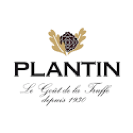 Plantin veut relancer la production de truffes française - 18/01/2024
Plantin veut relancer la production de truffes française - 18/01/2024
